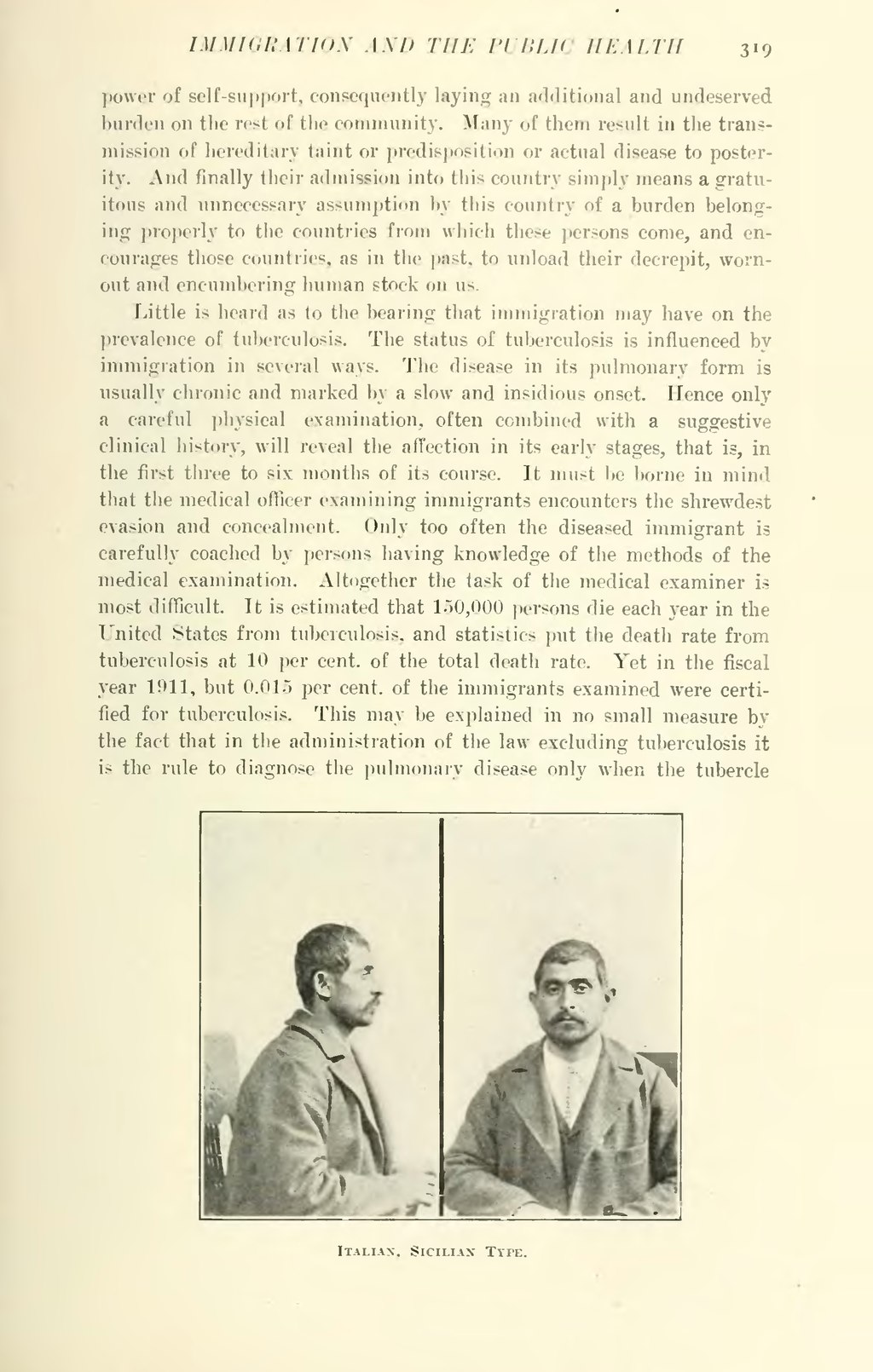power of self-support, consequently laying an additional and undeserved burden on the rest of the community. Many of them result in the transmission of hereditary taint or predisposition or actual disease to posterity. And finally their admission into this country simply means a gratuitous and unnecessary assumption by this country of a burden belonging properly to the countries from which these persons come, and encourages those countries, as in the past, to unload their decrepit, worn-out and encumbering human stock on us.
Little is heard as to the bearing that immigration may have on the prevalence of tuberculosis. The status of tuberculosis is influenced by immigration in several ways. The disease in its pulmonary form is usually chronic and marked by a slow and insidious onset. Hence only a careful physical examination, often combined with a suggestive clinical history, will reveal the affection in its early stages, that is, in the first three to six months of its course. It must be borne in mind that the medical officer examining immigrants encounters the shrewdest evasion and concealment. Only too often the diseased immigrant is carefully coached by persons having knowledge of the methods of the medical examination. Altogether the task of the medical examiner is most difficult. It is estimated that 150,000 persons die each year in the United States from tuberculosis, and statistics put the death rate from tuberculosis at 10 per cent, of the total death rate. Yet in the fiscal year 1911, but 0.015 per cent, of the immigrants examined were certified for tuberculosis. This may be explained in no small measure by the fact that in the administration of the law excluding tuberculosis it is the rule to diagnose the pulmonary disease only when the tubercle


